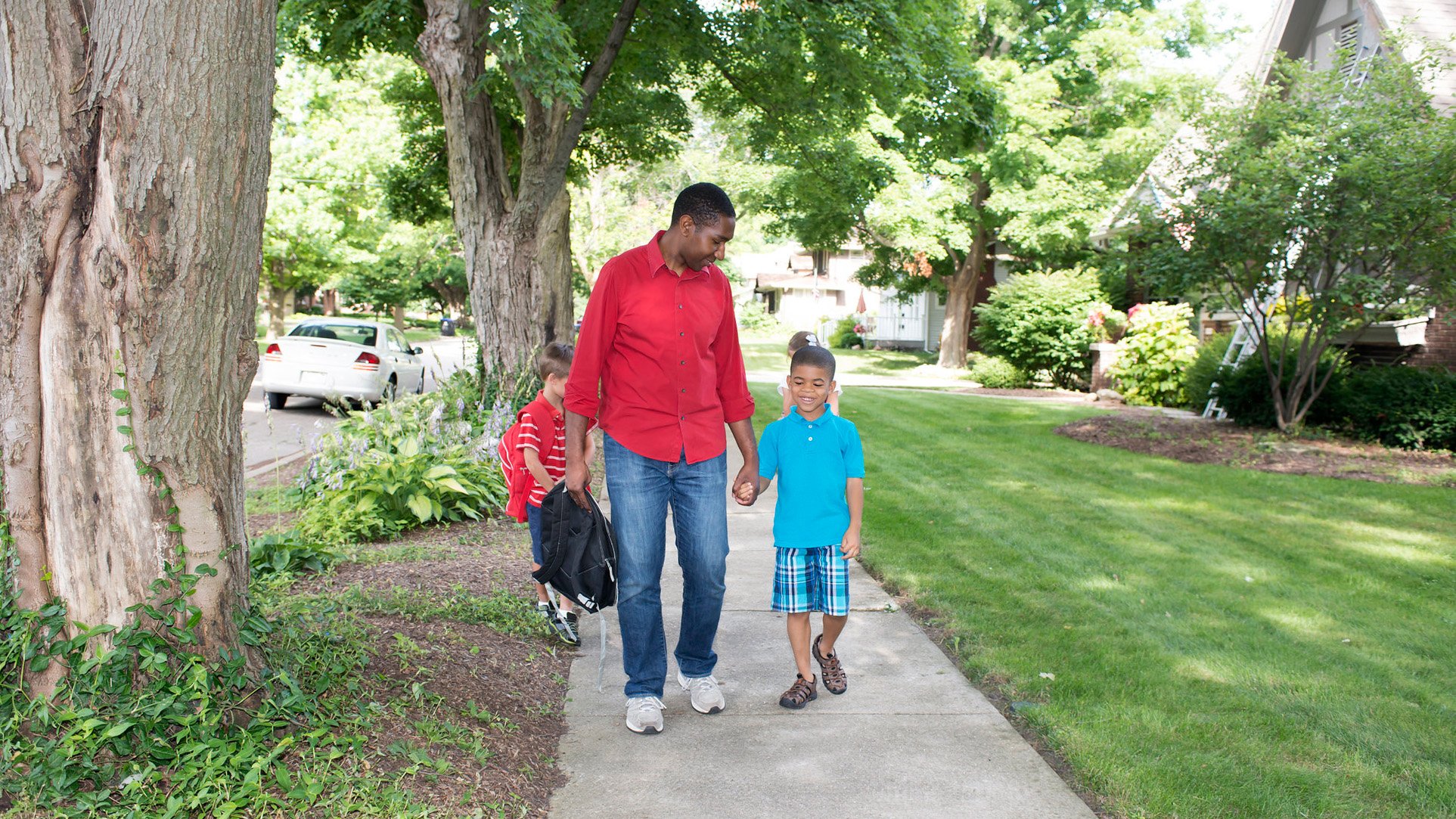Back in My Day…Children Actually Were More Independent
(Source: Flickr/State Farm.)
Most arguments that begin with, “back in my day…” are derided for their reliance on decades-old memories, rather than reality. Yet, a study in The Journal of Pediatrics insists that older generations claiming their childhood was marked by more freedom, play, and autonomy than that of children today may actually have a point.
A survey of hundreds of articles and advice columns about child rearing dating back to the early 20th century showcase a transition from viewing and treating children as “competent, responsible, and resilient” to individuals in need of supervision and protection. Children arguably haven’t changed to warrant this shift, but the attitude toward them (and, subsequently, their independence) has.
The shift isn’t limited to how we write about children. Several European studies cited therein observed a decline in children’s independent mobility, defined as “children’s freedom to travel in their neighborhood or city without adult accompaniment.” It’s not that children don’t want to go outside unsupervised. Instead, with every passing generation, parents seem increasingly less comfortable with the idea.
The trend doesn’t only apply to unstructured play around the neighborhood. In England, parents granting their children permission to walk home alone from school dropped from 86% in 1971 to 35% in 1990 and even lower to 25% in 2010. Today’s parents are even less likely to allow their children to take public buses. In 1971, 48% of parents granted their children permission to take the bus compared to 12% in 2012. The numbers in the U.S. are similar, if not starker, the study adds.
Overall, the study builds a correlation between the decline in child autonomy and the decline in children’s mental health, focusing on how parental choices, at home and outside of it, contribute to the latter. At the same time, parents exposed to the study point out how in some cases, limiting children’s autonomy is not just cultural, but mandated by their built environment and even the institutions that serve their children.
For example, one user on Twitter lamented that her child’s school district requires a parent to be present at school bus pickup until 3rd grade. Her comment was in reply to another user expressing how in the 1990s, “it was unheard of for parents to drive their kids to the school bus and actually wait there with them.”
my daughter's district requires it until 3rd grade. It's obnoxious.
— Luke M (@SocialSkywalker) October 16, 2023
An elementary school in Houston, Texas, made headlines in 2016 for outright banning students from walking to school. “The principal has decided that no matter how close the student lives to the school, the student must either take the bus, or the parent must wait in a long car pickup line,” the local Fox affiliate reported at the time. “Try to walk your student off the campus and you could face criminal charges.”
A parent who lived just behind the Houston school ultimately transferred her children out, blaming the policy. "She's threatening to arrest people," she said of the principal. Her children formerly walked to the school, which was steps from their home.
A survey by the National Center for Safe Routes to School found that in 2009, 6% of parents cited school policies as barriers to walking to school. While far from the primary barrier identified, policies like the one in Houston rob parents and students of a transportation option under the pretense of safety. “Although a school rule may have stemmed from safety concerns for students, its implications could work against a [Safe Routes to School] program,” the National Center stated.
Furthermore, in prohibiting walking and biking and consequently mandating driving, road conditions become increasingly unsafe for students and staff around school grounds. As a result, the “safety concerns” that initially motivated the school policy in the first place become even more relevant.
“As the percentage of children walking and bicycling to school continues to decrease, motor vehicle traffic increases, and parents become more convinced that walking to school is unsafe for their children,” the National Center observed. “Parents may believe that the safest way to school is for them to drive their children, but may not be aware that by driving they contribute to the traffic congestion and traffic danger surrounding the school.”
In fact, according to the National Highway Traffic Safety Administration, crashes are one of the leading causes of death for school-age children. In 2013, over 1,000 children ages 14 and under were killed and 172,000 children in this age group were injured, not just on foot but also as passengers. It’s no wonder traffic-related danger, as the National Center put it, was the second most cited barrier to commuting to school by foot or bicycle.
If parents and school officials want to protect children, inhibiting their independence is not the way to do it. As Strong Towns member Will Gardner put it in his article, “Silly Rabbit, Streets Are For Kids”:
“Our streets become less safe because cars —> parents drive their kids more places —> this increases car traffic in neighborhoods and makes streets less safe.
All of this adds up to many kids missing out on the independence that comes from being able to walk and bike around town on their own.”






Asia (pronounced “ah-sha”) Mieleszko serves as a Staff Writer for Strong Towns. A dilettante urbanist since adolescence, she's excited to convert a lifetime of ad-hoc volunteerism into a career. Her unconventional background includes directing a Ukrainian folk choir, pioneering synaesthetic performances, photographing festivals, designing websites, teaching, and ghostwriting. She can be found wherever Wi-Fi is reliable, typically along Amtrak's Northeast Corridor.